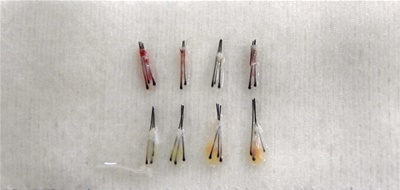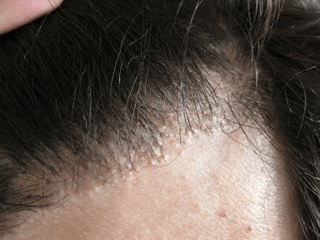
The general public believes that most hair transplants fail. The images of "barbie doll" like hair plugs that were common in the '80s and 90s still plague the minds of the general public today. Truthfully, the disastrous results that many received in the '80s are thing of the past.
However, that doesn't mean that every hair transplant result is a success. Unfortunately, not all hair transplant surgeons are created equal, their experience and skill vary widely, as do their results. This is why it is crucial to go to a qualified and competent surgeon.
In this article, we will be discussing some of the reasons why modern-day hair transplants fail.
Follicular Unit Graft Damage

Today, the most common reason why hair transplants fail to grow is due to improper graft handling. Surgical hair restoration is a collaborative effort that requires teamwork for the grafts to survive and for the procedure to succeed.
Unfortunately, as previously mentioned not all surgeons are created equal, as well as their team and clinical staff. Follicular unit grafts are a living organism that must be treated with the utmost care and attention.
The grafts will not grow if they are physically damaged or mishandled during the removal, preparation or placement. The hair grafts cannot be out of the body for a prolonged period of time, otherwise, they will die.
This is why choosing a hair transplant clinic with proven consistent results and experience is crucial.
Mismanaged Expectations

The success of any cosmetic procedure is only as good as the patient's satisfaction; hair transplant surgery is no different. Even if the procedure is a success based on hair growth, the patient may deem the results to be lackluster due to their ultra-high expectations.
Ultimately, it is the surgeon's job to properly inform the patient of what can be achieved through hair transplantation. Unfortunately, some unethical hair transplant clinics promise patients the sun, the moon, and the stars in order to get them into their chair.
This modus of Operandi leads to dissatisfied patients and is unethical, to say the least. Sadly, some patients exclude themselves from being suitable hair transplant candidates, based on their demands and expectations.
There are limitations with hair transplant surgery and it is important to remember that hair transplantation does not create any new hair, it merely relocates hair to another location.
Improper Surgical Protocol

Recipient site creation falls into the category of surgical protocol, this is another reason why choosing a competent surgeon is important. The recipient sites are the tiny micro-incisions that are created by the surgeon to place the follicular unit grafts.
These micro-incision sites will vary in size and depth depending on the follicular unit graft. For example, a multi-haired follicular unit graft will require a larger site than a single-haired follicular unit graft.
If the follicular unit graft is placed in a site that is too large the patient may experience "pitting" this refers to a scar that resembles a pit. Moreover, if too many recipient sites are created in close proximity to create ultra-high dense-packing, the patient's blood supply can be compromised; resulting in no hair growth. Moreover, if the recipient site is created at the incorrect depth or angle; the transplanted grafts will grow in unnatural directions.
Conclusion
Luckily, most of the outdated procedures that plagued the hair transplant industry decades ago are now history. That said, individuals still continue to have failed procedures, due to the aforementioned issues. However, these issues can be mitigated by selecting an experienced hair transplant surgeon with an expertly trained staff.
It is important that the surgeon and their staff have experience performing hair transplant surgery exclusively with each other for an extended period of time. Lastly, although surgical hair restoration is an elective procedure, it is still a surgical procedure that requires some favorable patient physiology.
In rare cases, some patients physiology may reject the transplanted grafts. In these rare circumstances, the growth is out of the surgeon's control.

